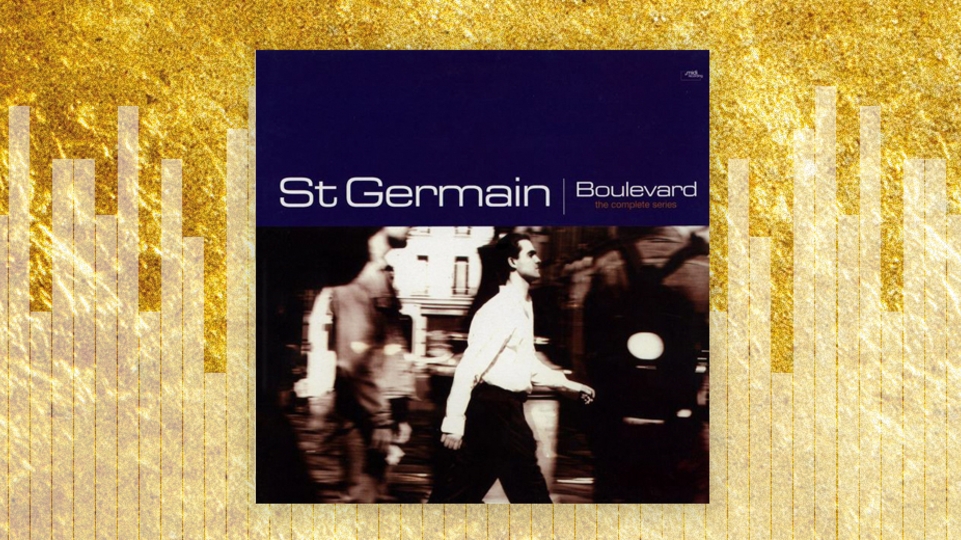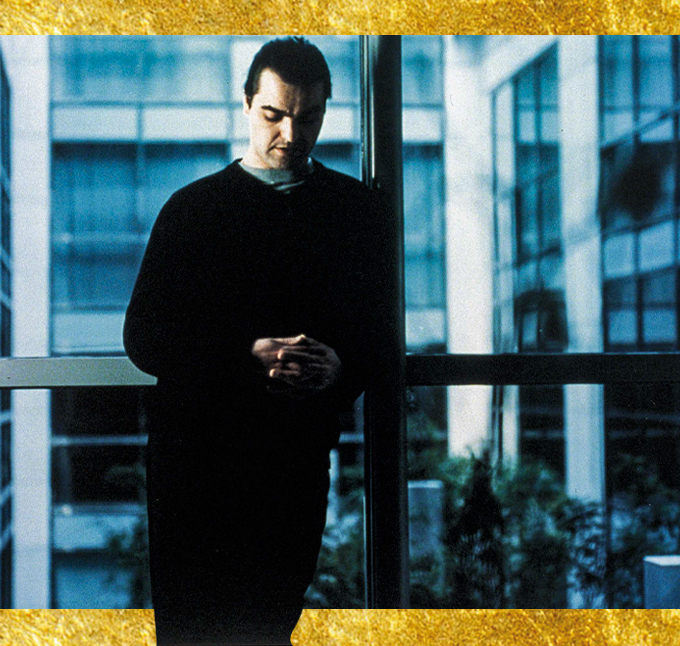Solid Gold: How St Germain’s ‘Boulevard’ opened the door for French house

When it was released in 1995, ‘Boulevard’ consummated the union between house music and jazz, whilst clearing the path for a wave of French house from artists like Daft Punk and Motorbass. A quarter century after its release, Ludovic Navarre’s house-meets-jazz gem still dazzles
‘Boulevard’, the 1995 debut album from Parisian producer Ludovic Navarre — aka St Germain — was by no means the first time jazz had mixed with house. Larry Heard, to name just one artist, was making those connections years earlier. But it was perhaps the first time the mixture had felt so downright inevitable. ‘Boulevard’ is one of those rare records that makes everything sound easy: An album that revolutionized the perception of French music, consummated the union between house and jazz, and spawned a million weakling copies.
The ingredients of ‘Boulevard’ are almost embarrassingly simple. Songs start with a basic riff, as if purloined from the dusty flea market of your dreams; a beat kicks in; various musicians solo over the top. There is nothing clever about it, no production trickery or flashing innovation. It sounds, in fact, like anyone could do it. But anyone almost certainly couldn’t. And the 10,001 copycat records that followed in its wake proved it.
Why did so many artists dig up rocks where Navarre mined gold? For a start, most producers wouldn’t have access to the young Parisian jazz elite that Navarre called on to record the album. Pianist and composer Alexandre Destrez is hugely important to the mix, his keyboard parts perfectly balanced between vamp and solidity; Pascal Ohsé, MalikMezzadri, Édouard Labord, and Miguel ‘Punta’ Rios add trumpet, flute, saxophone, and percussion respectively, the wonderfully deft touch of each allowing ‘Boulevard’ to purr. Some of them had played with St Germain before. Most would return for ‘Tourist’ five years later. More importantly, they exhibited serious chemistry on ‘Boulevard’, their instrumental lines bouncing off man and machine alike with an enviable fluidity.
But ‘Boulevard’ is not just a wonder of traditional musicianship; it is also a masterclass in production, with Navarre picking just the right part of the right sound and allowing it to play for the right amount of time. Elements of jazz are sometimes used in modern music as asledgehammer-subtle show of sophistication — that blaring saxophone solo that interrupts an otherwise perfectly good rock song, for example.
What Navarre does is quite the opposite of that: his use of jazz is anything but flashy, employing tiny elements to maximum impact, the borderline between sampling and live instrumentation melting before his touch. The fact that it is often impossible to tell what is sampled and what is live on ‘Boulevard’ is a tribute to Navarre’s textural mastery.
‘Sentimental Mood’, for example, is based around two brief piano stabs, the song’s 10-minute journey building like a pearl around this seemingly insignificant piece of grit; ‘Easy To Remember’ employs what sounds like a sample from an old jazz record: one bar, one chord, three bass notes and a swinging cymbal, which repeat to maddeningly brilliant effect, the simplicity of the loop binding the song together like glue. When the bass is left free to wander for a single, wonderful bar, nearly seven minutes in, the impact of this simple move is like Hendrix dashing off a firebrand guitar solo. ‘Thank U Mum (4 Everything U Did)’, meanwhile, uses slivers of Lightnin’ Hopkins’ ‘Mama Blues’ — half lines, odd words — to brilliant effect, their blue tones offsetting the song’s sparse electronic shuffle like a dash of scarlet lipstick. If Moby wasn’t listening, he should have been.
‘Easy To Remember’ also provides a lesson in Navarre’s wonderfully intricate beats. This is largely a house album, although ‘Street Scene (4 Shazz)’ and ‘Forget It’ ride boom-bap hip-hop drums, while ‘Dub Experience II’ is a brief excursion into reggae that is far more accomplished than it has any right to be. The rhythms are mainly provided by drum machines, which tick, swing, and shuffle with a jazzy insouciance. On ‘Easy To Remember’, we see how brilliantly this works. The cymbal shuffleand brushed snare drum of the central motif are joined by wood block tick, hi-hat shuffle and drum machine snare, the different elements joining in a subtly shifting dance around the central bass-drum thump.

‘Boulevard’ created waves in France and beyond. America may have initially looked the other way— the album wasn’t even released there until 2002 — but the UK, then in the middle of an acid jazz splurge, flipped for the album’s Parisian cool, with it topping dance magazine Muzik’s albums of the year list ahead of Goldie’s ‘Timeless’. This may seem unremarkable now. But in those days, British attitudes to French music often fell somewhere between willing ignorance and downright contempt.
Navarre, a one-time champion wind surfer, had already played an important role in the first wave of French electronic music producers, with a string of releases in the early ’90s on labels such as F Communications. Notably, he was the engineer on Choice’s classic 1993 12-inch, ‘Acid Eiffel’, which pricked ears in the UK and the US, getting signed to Derrick May’s Transmat off-shoot, Fragile.
But the record’s success was way beyond the underground triumph of ‘Acid Eiffel’, clearing the path for a wave of French house, with Motorbass’ ‘Pansoul’ arriving the following year, and Daft Punk’s ‘Homework’ in 1997. ‘Boulevard’ may not have had that classic French Touch sound — there are few filters and little to no disco — but its historical importance to the later acceptance ofthe genre cannot be overstated.
St Germain would return in 2000 with ‘Tourist’, an album that sharpened the ‘Boulevard’ sounds to massive commercial success, selling a jawdropping 4 million copies. The ‘Boulevard’ sound can be heard in thousands of house productions, from DJ Deep to Mr. Scruff, while the (horribly named) nu jazz/jazztronica style of The Cinematic Orchestra, Jazzanova, Bugge Wesseltoft et al. owes a clear debt to ‘Boulevard’. You could even draw a line from St Germain to Flying Lotus, the LA beat scene, and London’s current crop of young jazz producers, with ‘Boulevard’ proving 25 years ago that the combination of electronic music and jazz could thrive in the album format. ‘Boulevard’ continues to sell, slowly but surely, driven by word of mouth and reputation. In 2009, the album won a diamond award for sales of 250,000 copies throughout Europe, while in the UK, it has a silver disc for 60,000 sales.
Perhaps ‘Boulevard’’s greatest legacy, however, is how dazzlingly fresh and alive it sounds today. Thousands of records have tried to sound like ‘Boulevard’; very few have succeeded. And if there exists a greater album for soundtracking a wander around Paris on a bright autumnal day, then we have yet to hear it.





